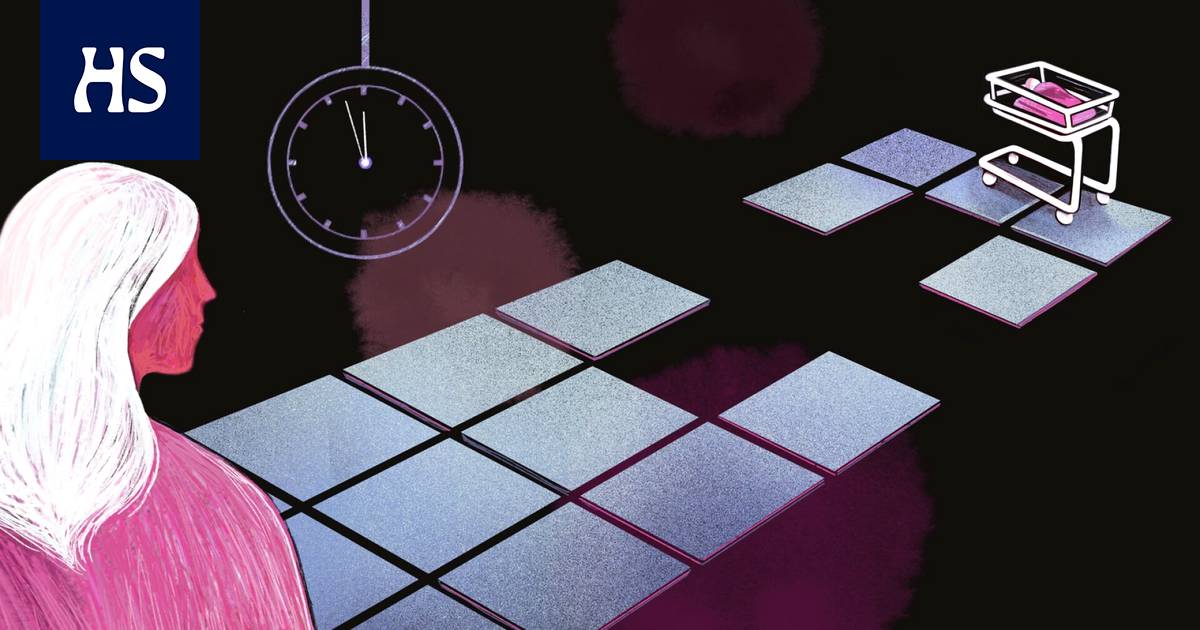Infertility treatments are used in public health care for people under 40 years of age. Many children who wish to have time have time to go beyond the age of accessing treatment.
Corona epidemic, staff shortages and insufficient resources have increased queues for infertility care.
For example, in the Helsinki and Uusimaa Hospital District (Hus), treatments may have to be queued for up to a year and a half.
With an upper age limit of 40 years for treatment, many have time to exceed the age before entering treatment.
This is what happened to the people of Helsinki To Annika and his partner. Because of his wife’s privacy, he doesn’t want to appear in a story with his name.
Annika had one round of treatment at Hus before she turned forty. Now she is wondering with her partner if she will continue treatment in private. The decision is not easy.
Annika is by no means the only one. During the case, Helsingin Sanomat was contacted by several women who were no longer admitted to the treatment queue at Hus at the age of 38–39.
Also According to the Simpukka Association for the Infertile, many have been denied access to treatment due to long queues before reaching the upper age limit.
“It is staggering to get a treatment decision first and get in the care queue and then hear that due to a lack of resources, 40 years of age have to be spent in the queue and treatments are denied,” Simpukka ry’s executive director Piia Savio says.
In Finland, treatments with gift germ cells were resumed in public in November 2019, and thanks to that, treatments became possible for self-employed women and female couples as well.
Although there is an even wider group of patients in fertility treatments, according to Savio, the resources for the treatments have not been increased enough.
Gift germ cell treatments are performed on the public side in university hospitals.
To the queues The fact that infertility treatment was temporarily suspended in university hospitals in March 2020 may also contribute to the corona epidemic.
At the time, HS interviewed Maria, a 39-year-old waiting for access to infertility treatments alone, who would only have one round of treatment for her age.
Maria feared the pandemic would lead to her becoming permanently childless.
Read more: Last round
As a rule, treatments were restarted later in the spring or summer. The interruption is only slightly reflected in the overall statistics of the National Institute for Health and Welfare (THL). In 2020, about 12,760 treatments were started, which is only 3.8 percent less than in 2019.
However, queues may also be affected by an increase in the number of treatments performed on donated gametes.
They accounted for 22% of all treatments in 2020 and 11.4% of treatments provided in the public, more than ever before.
“The availability of treatments is also affected by the amount of gametes donated, and receiving donations also requires resources,” Savio says.
HS: n the treatments of Maria interviewed continued in November. He had just turned forty. She underwent a round of in vitro fertilization treatment. That was his last chance.
“It was quite a hair’s breadth that I would still be in the public queue for my age,” Maria says now.
Maria enrolled in infertility treatments at Husi as soon as they became possible for a woman who was having a child herself.
“I was the first to get in the queue and despite that I was waiting in line for treatments for over a year. It was the hardest year of my life. ”
The treatment was successful and she had a child in August last year.
“It feels like a little miracle,” Maria says.
There were eventually three embryos, two of which are still unused.
Although Mary’s story got a happy conclusion, but for everyone, the treatments don’t lead to the desired outcome.
In vitro fertilization treatments about 20 percent of the child’s birth progresses. The corresponding proportion in insemination treatments is about 10 percent.
In in vitro fertilization, a woman’s egg is fertilized by sperm outside the body. In insemination, fertilization is done with sperm donated in the womb.
One in five women of childbearing age is completely childless and almost one in three men.
Many people have time to come to terms with age in terms of treatments, says Savio from Simpukka ry. About half of those who start infertility treatment are over 35 years old.
Annika expressed the desire to have a child as soon as he met his current partner two years ago. He was then 38 years old and had no time to waste.
In her previous relationship with her then-husband, she had already tried a child and had a suspicion that the pregnancy would not succeed easily.
“I was well aware of it and my age. That was actually the reason why I moved to Helsinki, because I was also considering having a child alone, ”says Annika.
After six months of trying, the couple went to a private clinic for infertility tests. At the same time, the doctor wrote a referral for infertility treatments to the public.
“Hus already had long queues at that point. Part of it was due to the corona, but there was also a perception that there was a shortage of staff in general, ”says Annika.
Alun the couple were originally told that the queuing would last at least a year. During the queue, Annika underwent four insemination treatments with no private results.
In the summer of 2021, they made their first visit to Hus due to cancellation. Despite this, treatments at Hus did not start until December.
“I realized that because of my age, we were taken out of the queue and told that we would have time to do one round of treatment,” Annika says.
As Annika turns forty in February, she will no longer receive infertility treatment on the public side due to her age. The couple is now considering continuing treatment in private.
Making a decision is difficult. Annika says that the couple has spent about 7,000 euros on research and treatment so far.
“While not everything can be measured in money, it is clear that at some point it will become an obstacle. Even the public alone consumes a surprisingly large amount of medicines, ”says Annika.
In private in vitro fertilization treatments can cost up to € 4,000 to € 5,000.
Annika wonders that during or after the treatments, he was not offered any psychosocial support at Hus, except for one doctor’s appointment, or even advice on where to get one.
The lack of resources on the public side is also reflected in the lack of psychosocial support, says Savio from Simpukka ry.
According to Annika, the idea of being permanently childless has caused her a great personal crisis.
“I have questioned almost my entire life, career, dreams and decision I have made in my life. Why didn’t I start saving for infertility treatments before, but no one thinks like that when I was young, ”says Annika.
Shellfish Association Savio would like the criteria for infertility treatment to be re-evaluated on the public side so that there are opportunities for treatment at a later date. In private clinics, the upper age limit for infertility treatments is usually about 45 years.
The mussel therefore insists that fertility treatments should be provided equally to all who need them.
“Welfare areas need to increase resources for infertility care so that those in need of care who receive a child receive the help they need in a timely manner. The workload of the clinics must be reduced by a sufficient number of staff, ”says Savio.
#Infertility #Annika #waiting #line #congested #fertility #treatments #thinks #shes #young









